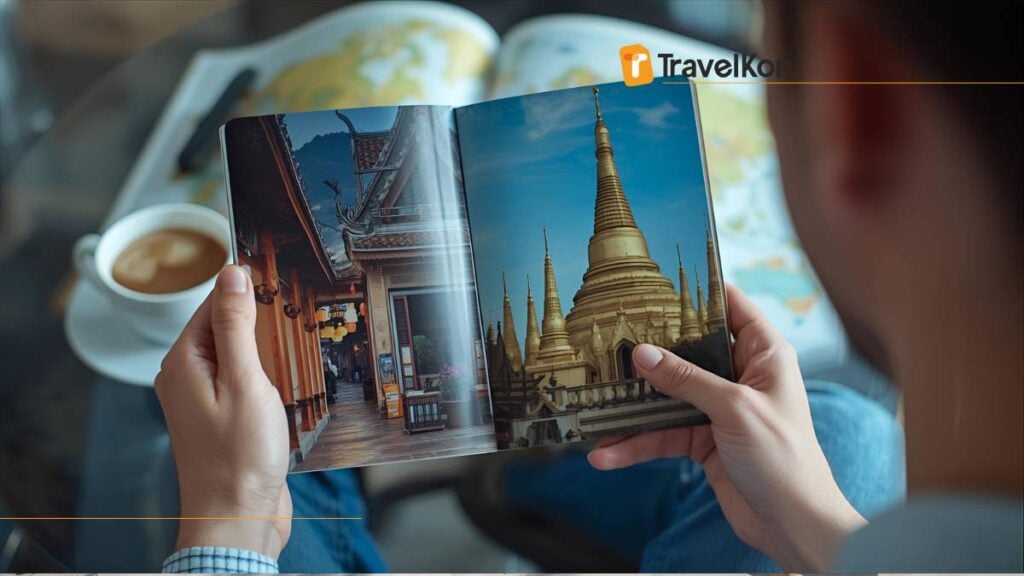Immunizations for Vietnam: Travel Preps & eSIM Tips
Planning a trip to Vietnam is an exciting adventure filled with rich culture, stunning landscapes, and unforgettable cuisine. However, ensuring the right immunizations for Vietnam, reliable Vietnam eSIM connectivity, and proper travel preparation is crucial to staying healthy and comfortable throughout the journey. Taking the time to organise vaccinations, set up a TravelKon Vietnam eSIM, and prepare practical essentials can make your arrival seamless, connected, and stress-free. According to data from the World Health Organization (WHO), over 80% of travellers who received country-specific vaccinations before travelling to Southeast Asia reported fewer health issues abroad. Combining the right immunisations with smart planning ensures a safe and enjoyable trip. 1. How to Buy Vietnam eSIM Before Landing Staying connected from the moment of arrival in Vietnam is essential for smooth travel. Purchasing a Vietnam eSIM before landing is one of the easiest ways to ensure instant mobile connectivity without switching physical SIM cards. A TravelKon eSIM allows travellers to access reliable 4G data coverage across cities like Hanoi, Da Nang, and Ho Chi Minh City. The Mobifone Vietnam eSIM from TravelKon offers simple activation via QR code and flexible data plans suitable for any travel duration. Why a TravelKon eSIM is essential: Having your connection ready before departure also helps access important vaccination records, embassy contacts, and travel insurance online upon arrival. 2. Confirm Required Immunizations for Vietnam Before departing, it’s important to confirm which immunizations for Vietnam are recommended based on travel length, location, and activities. Common vaccines include Hepatitis A and B, Typhoid, Tetanus, and Japanese Encephalitis for extended rural visits. Consulting a travel health clinic at least six weeks prior allows time for multiple-dose vaccines. Bring a printed record of vaccinations, as some border officials may request documentation for long-term stays. Most recommended vaccines include: Always store vaccine proof digitally on your device or cloud service for easy access during border checks or emergencies. 3. Prepare a Personal Health and First Aid Kit Carrying a personal medical kit ensures quick access to essentials in case of minor illnesses or injuries. Vietnam’s humid climate and street food culture can occasionally cause mild stomach issues for travellers. Pack medications that suit personal health needs, including antibiotics prescribed by a doctor and antihistamines for allergy management. Basic medical items can be costly or hard to find in rural regions. Essential first-aid items: A compact medical kit gives peace of mind and reduces the risk of small health issues interrupting travel plans. 4. Review Travel Insurance with Health Coverage Comprehensive travel insurance with medical coverage is vital when travelling abroad. Ensure your policy includes hospitalisation, evacuation, and coverage for infectious diseases common in tropical areas. Contact your insurer before departure to confirm that vaccinations or pre-existing conditions won’t affect eligibility. Keep both printed and digital copies of your policy. Look for insurance that includes: Reliable insurance provides financial protection and access to immediate medical help when needed. 5. Check Entry Requirements and Health Declarations Vietnam’s entry requirements may include proof of vaccination or health declarations, especially for long-term visitors or those entering from high-risk areas. Before flying, review updated government travel advisories and airline regulations. Having digital access to forms and certificates simplifies the immigration process. Documents to prepare: Staying connected via TravelKon eSIM ensures easy access to these digital documents upon arrival. 6. Arrange Local Currency and Payment Methods While major Vietnamese cities are card-friendly, smaller towns and local food markets often accept only cash. Preparing Vietnamese Dong before arrival helps avoid currency exchange delays. Having a mobile wallet app or multi-currency travel card ensures safe transactions. Avoid carrying large amounts of cash while travelling between destinations. Suggested payment preparations: Strong data connectivity from a TravelKon eSIM allows safe digital transactions and real-time exchange rate checks. 7. Pack Weather-Appropriate Clothing and Footwear Vietnam’s climate varies by region, from tropical humidity in the south to cooler highlands in the north. Light, breathable fabrics are ideal for comfort and hygiene. Include modest clothing for visiting temples and religious sites. Comfortable walking shoes are essential for exploring markets and historical areas. Recommended clothing list: Packing with purpose ensures comfort regardless of the weather or travel route. 8. Download Travel Apps and Offline Maps Vietnam’s cities can be complex to navigate, so downloading useful travel apps in advance helps with transport, dining, and accommodation. Reliable internet from TravelKon eSIM allows real-time access to local information. Prepare offline maps for backup in areas with limited coverage, especially when exploring rural or mountainous regions. Useful apps to install: Having these tools ready simplifies daily travel tasks and enhances safety. 9. Learn Basic Vietnamese Phrases Learning a few Vietnamese words makes interactions more enjoyable and respectful. Locals appreciate even simple greetings or polite expressions, helping travellers build genuine connections. Basic language knowledge also helps when reading menus, understanding directions, or purchasing beverages at local markets. Essential phrases to know: Language confidence adds depth to the cultural experience and encourages friendly encounters. 10. Plan a Balanced Itinerary Balancing activities across Vietnam’s diverse regions ensures a fulfilling trip. Include a mix of cultural visits, relaxation, and outdoor adventures to avoid fatigue. Planning rest days between destinations helps the body adjust to climate changes, particularly after vaccinations or long flights. Suggested itinerary balance: With careful planning, travellers can experience the best of Vietnam’s culture, cuisine, and scenery stress-free.
Immunizations for Vietnam: Travel Preps & eSIM Tips Read More »





